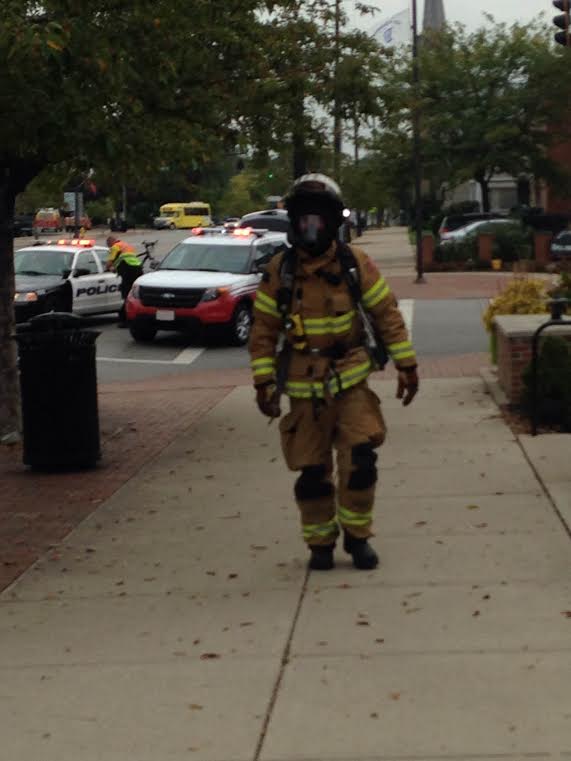
A fire inside Amato’s Woodfired Pizza at 6 S. Sandusky St. is out after firefighters from the Delaware city, Orange Township-Lewis Center and Tri-Township Fire Departments responded to a report of smoke coming from the roof.

A fire inside Amato’s Woodfired Pizza at 6 S. Sandusky St. is out after firefighters from the Delaware city, Orange Township-Lewis Center and Tri-Township Fire Departments responded to a report of smoke coming from the roof.
In a student engagement survey conducted in the spring of 2013, 65.9 percent of responding students indicated that they were involved in five or more clubs or campus organizations. The survey had a 30-percent response rate from the pool of 1635 students — Ohio Wesleyan’s total student population — and 63.2 percent said they hold one to three leadership positions in a student organization.
The amount of time necessary to dedicate to five extra curricular raises questions about the amount of stress laid on students in that position, even if they are taking the bare minimum 3.5 units of coursework for a semester. Dean of Students Kimberlie Goldsberry said she advises students to use discretion when taking on commitments outside of their academics.
“I would always recommend working toward some reasonable balance in all things,” Goldsberry said. “Not all activities take the same amount of work. You could be leading and planning events or just going to the meetings once a week…the quantity of obligations doesn’t say everything.”
Despite their busy schedules, the students seem to be enjoying the work they’re doing. 79.3 percent of students in the survey indicated they were involved in their organizations because they enjoyed the activities involved, even though 85.6 percent reported a “heavy academic workload” as a “key limitation for being involved” in those activities. Dean Goldsberry attributed this, at least in part, to differences in the way people handle a crowded work day.
“I do better when I’m busier, it makes me motivated to plan and schedule around what I have to do,” Goldsberry said. “Somebody else might find that too constricting, so it can be a challenge to strike that balance.”
The Issue: Ebola
Ebola is one of the most fatal diseases known to humankind, and it is the cause of one of the deadliest outbreaks in history in Africa. According to the World Health Organization, Ebola has a death rate of up to 90 percent, and is caused by human-to-human interaction, such as bodily fluids.
Currently, the death toll is 2,100 in several West African countries: Liberia, Guinea, Sierra Leone, Nigeria and the Democratic Republic of Congo, according to Yahoo News. By some estimates, there are about 3,500 confirmed cases of the disease, with no cure. Approximately 240 health workers in the affected areas have been infected with the disease and several have died, the Washington Post reports. However, several Americans who were infected were flown back to the U.S. and given an experimental treatment.
The Washington Post reports there are now fears that Ebola will be spreading from “remote provinces” to the bigger cities in Africa. The Post also said, “Last week, the World Health Organization warned that the number of cases could hit 20,000 in West Africa.”
The Issue: Countering ISIL
After the recent videos of American journalists being beheaded by suspected members of ISIL, the United States has ramped up their strategy against the Islamic State of Iraq and the Levant. Vice President Joe Biden said in a speech, “We take care of those who are grieving, and when that’s finished, they should know, we will follow them to the gates of hell until they are brought to justice. Because hell is where they will reside. Hell is where they will reside.”
And on Sunday, the United States launched a new series of airstrikes against Sunni fighters, which were aimed at ISIL militants. These recent attacks were made to stop militants from seizing and important dam on the Euphrates River and “prevent the possibility of floodwaters being unleashed toward the capital, Baghdad,” the New York Times reported.
President Barack Obama will be making a speech to the nation on Wednesday, which will be used to “make his case for launching a United States-led offensive against Sunni militants gaining ground in the Middle East,” the New York Times reported. President Obama has said this speech is “…not going to be an announcement about U.S. ground troops…this is not the equivalent of the Iraq war.”
The Associated Press said the head of the Arab League “urged its members…to confront Islamic State extremists ‘militarily and politically,’ issuing an apparent call to arms as President Barack Obama prepares to go to lawmakers and the American public with his own plan to stop the militants.”
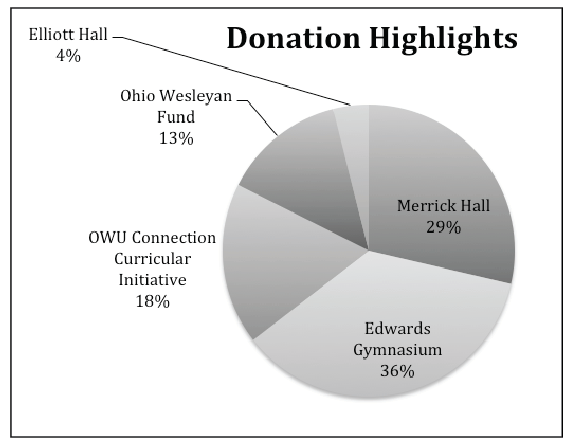
Ohio Wesleyan collected $30.2 million in the last fiscal year of fundraising.
Alumni, parents and friends of the university made that amount in new gifts and commitments between July 1 of last year and June 30, 2014.
According to Vice President for University Advancement Colleen C. Garland, the amount includes a $5 million donation from alumni John F. and Kathryn Bradford Milligan for the OWU Connection curricular initiative, which aims to track and improve the effectiveness of various academic programs on campus by tracking new metrics related to them.
$3.8 million was donated separately for the Ohio Wesleyan Fund and $465,754 for the Team OWU initiative, which support campus operations and varsity sports respectively.
A boost of about $19 million in philanthropic support went toward various building projects in progress on campus. An $8 million donation from 1958 graduate Louis A. Simpson and his wife, Kimberly K. Querrey helped the university meet the $10 million funding goal to complete renovations on Edwards Gymnasium and the former Pfeiffer Natatorium, which will become the Simpson Querrey Fitness Center when it is completed in the fall of 2015.
The final highlight includes a $1.1 million estate gift, which will be added to the insurance-funded effort to repair and upgrade Elliot Hall’s infrastructure after a frozen pipe ruptured during last year’s “polar vortex,” causing the building to close for a semester.
Another notable donation comes from an anonymous donor, giving $8 million for the renovation of Merrick Hall.
Of the total amount, $22.2 million of the donations were made in cash, making for a 55 percent increase over a three-year average of $14.2 million.
“While we celebrate every gift commitment, we are especially gratified to have been able to deliver such a substantial amount of cash to put to work right away to address some of the university’s highest priorities,” Garland said.
President Rock Jones said the generosity and vision of Ohio Wesleyan’s many donors indicate their strong commitment to the university’s educational mission, students, and faculty.
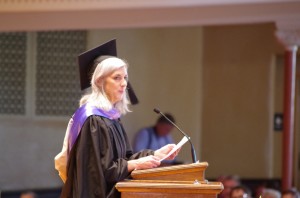
A new year sees new changes in administration, as two positions have been filled by new hires this fall.
One of these employees is Meredith Dixon, who now serves as the Assistant Director of Residential Life. Dixon, a Residential Life Coordinator (RLC) at OWU for the past three years, was promoted to the position this summer after the departure of Drew Peterson.
Though she is still adapting to the new responsibilities, Dixon expressed excitement for a year full of new challenges.
“So far we have revamped our August training, but on a more broad scale, I want to see ResLife get more updated and easily available,” she said. “And in the long term I’m really looking forward to getting involved with the student master housing plan and helping that plan gain momentum.”
Her promotion to the position is not unusual, as the past three previous hires were once RLC’s as well. According to Dixon, this is ideal as her responsibilities now include supervising the RLC staff and having prior experience in the position is very valuable.
Unlike Dixon, the new Vice President for enrollment was hired from outside of Ohio Wesleyan University. After 11 years as the VP for enrollment management at Baldwin Wallace University, Susan Dileno has moved to OWU.
Coming to OWU
Dileno was found last year by a search committee and ultimately appointed to the position by President Rock Jones.
For Dileno, her decision to come to OWU was driven by two key factors.
“First, I had been at Baldwin Wallace for 11 years, which in this profession is close to a lifetime,” she said. “You tend to give it your all, and then after a while you wonder what value you add to the institution. It was the time in my career where I desired a new challenge. I loved my time at BW and the community there was great, but professionally I didn’t want to be on coast.”
“Also, there were a lot of similarities when I visited here at OWU: everyone is passionate, involved and I felt the sense of a great community. In particular the community and the peers I am now working with really stood out to me,” Dileno said.
So what exactly does the VP for enrollment position entail?
“I oversee the job functions of admission and financial aid,” Dileno.
“It has become increasingly difficult to meet all of an instititutions goals and requirements, and so it is my responsibility to help the university trade off and find the right balance between all of those desires. Through sophisticated uses of leveraging, marketing, and researching, my job is strategic in nature.
“By employing good decision making through data and research, I strive to see the entire university and how we can better help connect different areas of OWU.
“Then we look to use these connections in order to recruit more students here and ultimately reach our goals.”
Dileno expressed excitement for the new challenges, and has the approval of a diverse search committee behind her. Professor of physics and astronomy, Barbara Andereck, served as chair of the search committee, and also indicated her approval.
“I think that OWU is very good about finding good matches, involving a lot of people in the process and getting feedback,” Andereck said.
“I think that is a real strength of OWU in general and it showed in this hiring.”
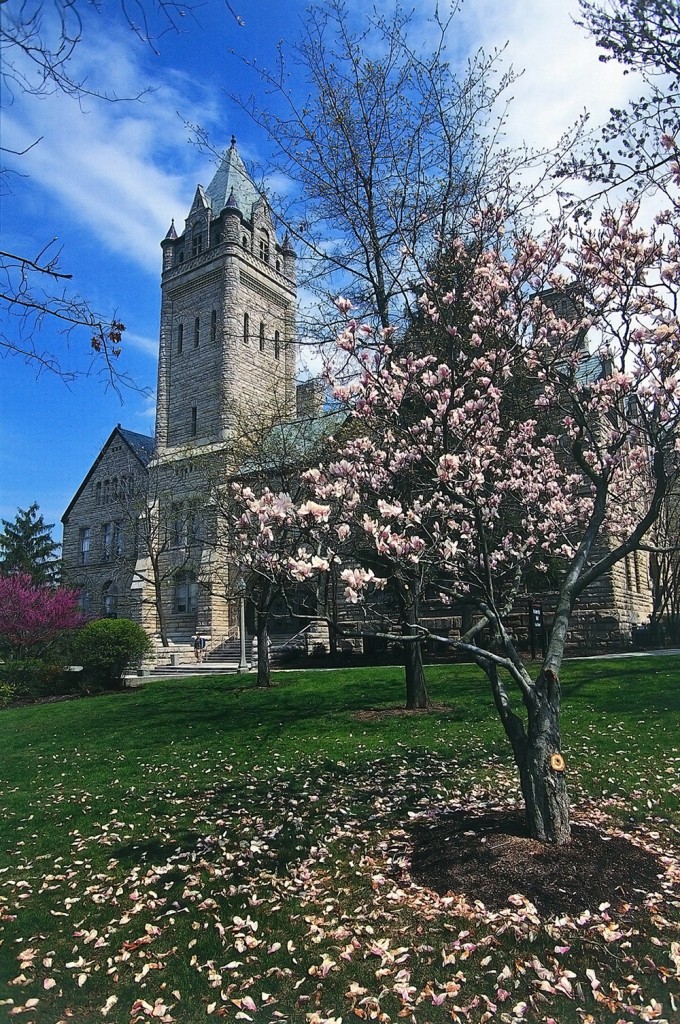
As the fall semester begins, the Ohio Wesleyan University community is smaller than expected. Enrollment is down for this year’s freshman class, and is the lowest it has been in the past five years.
The university’s goal is to have around 600 incoming freshmen every year. OWU generally meets this goal — according to a Fall 2014 Admissions report, the past two years have had 586 and 589 respectively. However, this year there are 490 incoming freshmen.
Why the drastic drop-off? Vice President for Enrollment Susan Dileno said to a certain extent, there is only so much the university can do.
“There are several dynamics working against us that unfortunately we can’t control,” Dileno said. “Nationally the number of 18-year-old students is on the decline. Additionally, Ohio and other states nearby us are experiencing a big decline, so just maintaining is hard. We have found that public instititutions are rising in strength, and the price of education is high.”
Despite the low enrollment, the class of 2018 boasts remarkable strengths. Representing 17 countries and 33 states, the class of 2018 already boasts a broad list of achievements. From an extra in the movie “Divergent,” to a competitor in the World Irish dance competition, talents and hobbies are diverse among the freshmen.
In terms of academic demographic, the class of 2018 is consistent with the past five years. Contrary to the popular rumor that GPAs of incoming freshmen are declining, not much has actually changed. According to an admissions report from this fall, the high school GPA for the class of 2018 is a 3.4 average. This class shares the same average GPA with all but the class of 2016, which had a 3.5.
“Our applicant and admit pool hasn’t really changed that much,” Dileno said. “But at the end of the day, it is impossible for us to control who does or does not enroll.
For Residential Life, this year’s lower enrollment gives some flexibility.
“We now have more spaces then students,” said Meredith Dixon, assistant director of Residential Life. “We want to use that to help accommodate students in a way that normally we wouldn’t be able to.”
For Admissions, while it is disappointing not to meet their enrollment goals, Dileno expressed high hopes for the future of this year’s class.
“Even though the numbers are low, we admitted students who bring their talent and passion to the university and promise to contribute in significant ways.”
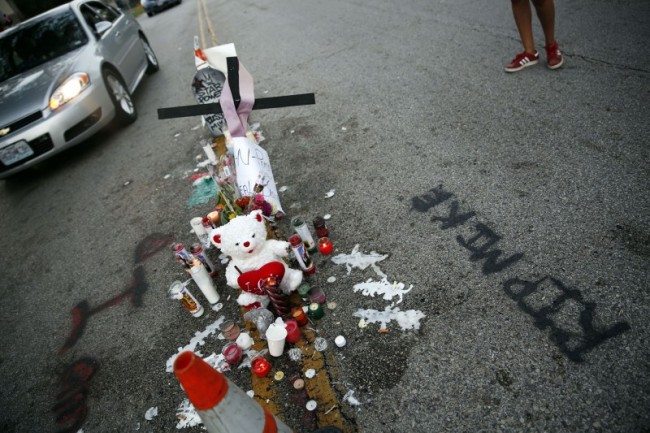
SH: Could you describe how race relations and racial inequality became a leading national issue in the 1960s, especially, and then declined to a certain extent since then?
MF: The Civil Rights movement, the freedom struggle, had of course been going on in the United States for centuries. It gains momentum during World War II, and after World War II, because you clearly can’t lead a fight on behalf of democracy and against fascism overseas and not turn and look at the racism that was prevalent in the United States. The United States in the 1940s, especially in the South, was a segregated nation, an apartheid nation in many respects. And so the Civil Rights movement gains momentum in the 1950s and 1960s. By the 1960s, certainly the early 1960s, civil rights is the top domestic issue, Dr. King has become a national figure, everyone in the country is aware of what’s been happening in places like Selma…The organized civil rights movement, the freedom struggle, reaches a peak in 1963, with the March on Washington, in 1964 with passage of the Civil Rights Act, and then in 1965 with the passage of the Voting Rights Act.
After 1965, civil rights begins to fade as a national issue for most white Americans, for a variety of reasons. The Vietnam War becomes an enormous distraction of energy and resources, the Civil Rights movement loses a number of its most effective leaders – obviously the assassination of Malcolm X in 1965, the assassination of Dr. King in 1968, that has a tremendous effect as well. The Civil Rights movement itself begins to fragment and splinter; some African-Americans decide that they no longer want to pursue integration into white society as their objective; others begin to reject Dr. King’s emphasis on nonviolent civil disobedience. You have a rise of a new and younger generation of African-American leaders and so there’s some tension and fragmentation within the movement, and then in the 1970s and late 1980s that trend continues, and the organized civil rights movement diminishes, there’s less public attention to the issue, although naturally African-Americans remain very committed to the cause throughout the period and are still fundraising. To be fair, a great deal of progress is also made, and that removes some of the urgency, and going to the point of this interview I think part of the issue in Ferguson is that many white Americans aren’t aware of the many serious and real problems that still exist because this issue of race relations hasn’t been on the front pages or television screens except for periodic episodic explosions. But in general, I don’t think that many white Americans don’t spend a great deal of time considering how difficult it is, especially for poor, urban African-Americans who are isolated not only from white society but also from middle-class black society. And if I can just continue, one of the great successes of the Civil Rights Movement of the 1960s is to create opportunities for middle-class Black professionals, many of whom have integrated successfully into society, moved into places and areas that were previously white-only, but they left behind a Black underclass that continues to struggle every day with economic oppression, police brutality – social problems.
SH: Do you see the death of Michael Brown and the way it’s been responded to as a potential watershed moment to bring race relations back into the national focus or do you think it could end up dying out?
MF: If I was an optimist, I would say that the death of Michael Brown might lead more Americans to question how the police operate and whether this war on drugs is worthwhile, whether it makes sense to pursue a prison policy of mass incarceration – the United States now has more people behind bars than any other country in the world, overwhelmingly these are poor people of color, there’s a tremendous discrimination built into our current policing system and I would hope people would take another look at it in the aftermath of Ferguson but I’m not especially optimistic.
SH: Why do you think it’s become such a critical issue in ways that the deaths of Oscar Grant or Trayvon Martin in the past did not, or even some of the other deaths this summer (of Eric Garner, John Crawford and Ezell Ford) did not?
MF: It’s a terrific question. I think the Michael (Brown) death has attracted national attention largely because of the reaction of the police department in Ferguson. It’s quite interesting to note in New York City and in other places the police were much more proactive in reaching out to the community, they had better relations with the community, most large-city police departments are much better integrated now than in the past, they’re much more sophisticated in terms of community relations. We saw none of that in Ferguson. We saw a mainly white police force that was clearly not prepared to engage in community relations or in damage control in a reasonable manner.
SH: Having studied the 1960s, which also saw very aggressive police tactics against largely nonviolent demonstrators, not only in the South but also in Chicago in 1968 at the (Democratic) National Convention, what was your reaction when you saw the initial police response in Ferguson?
MF: I was surprised that in the 21st century, a police force was so unprepared to deal with a peaceful protest. On the other hand I saw the events in Ferguson as a very direct consequence of the 1960s in two ways. First of all, the urban riots of the 1960s caused police departments across the country to shift their focus from crime control to riot control, and really retrain and rethink how to deal with large crowd protests and disturbances. It is also in the 1960s that we first see the militarization of policing and that’s in response to the riots of the 1960s but it’s also in response to the Vietnam War, because in the 1960s and 70s, as today, the military was shipping large quantities of equipment that it was no longer using to police departments across the country. And so the police departments are changing their tactics, but they also have access to a whole range of weapons and equipment as a result of the militarization of policing.
SH: Are there any moments in the movements for racial justice, whether in the United States or elsewhere – in South Africa, for instance – that you see as comparable to Michael Brown’s death in a historical perspective, or in terms of how the police and the public reacted?
MF: If you look at South Africa, there were police massacres that took place – Sharpesville, Soweto, other places like that. I do want to interject a note of caution here. The Michael Brown situation in Ferguson is a tragedy, but we’re talking about the death of one person. I don’t believe that the Ferguson police department has handled it well, I was as shocked and horrified by the images that we all saw of people wearing military uniforms and clearly having equipment that was inappropriate for the scene. At the end of the day, and perhaps this is a low bar, at the end of the day the police in Ferguson do have discipline, they do have control. One death is a tragedy, any death is a tragedy, but you can’t compare it to the killing of hundreds of people in South Africa or in other places by a police action.
SH: I’d read that some comparisons just in terms of the images and how they had their guns pointed, but other than what initially started it with the death of Michael Brown, the Ferguson police haven’t fired a shot.
MF: I would simply point out that I’m writing a book about the Harlem riot of 1964, which was the first major riot of the 1960s, and during the six days of the Harlem riot, officers of the New York Police Department fired thousands and thousands of warning shots. And it’s frankly a miracle that only one person was directly killed in New York City. By comparison, in Ferguson, the police have shown, I think, appropriate restraint in the use of firepower. Now perhaps they shouldn’t have displayed the firepower in the first place, and perhaps their response was somewhat overwhelming but they haven’t used those weapons, they’ve maintained fire discipline and command control and they’ve kept the tragedy from growing.
SH: Where do you think things will end up going from here? I know you said you weren’t very optimistic.
MF: As a pessimist, I believe that this incident will quickly be forgotten, I believe that it will be overshadowed by some other incident that captures people’s attention. I find that today, the world of new social media – people are quickly energized, but they equally quickly forget what has happened, move on to the next cause, the next issue…I hate to be cynical, but I feel quite confident that there will be another tragedy in the near future and public attention will shift to that tragedy and away from Ferguson, and the deep underlying problems in Ferguson that haven’t been addressed in the past 30 years aren’t likely to get addressed in the next year or two. Although I do hope that the police department in Ferguson will make more of an effort to integrate, to reflect the community it serves, and of course to take community relations more seriously.
SH: You mentioned social media. Could you talk about how social media has driven the way the America has looked at this case and even heard about it?
MF: The social media drives coverage of stories and interest in stories. It’s clear that CNN and other major news outlets had no idea how important events in Ferguson were until social media exploded. The conventional mainstream media sources have been cutting back in their coverage of stories that don’t fit a national profile and into that void social media has stepped. It’s a reflection, though, of how quickly the Twitterverse and social media can blow up a story but I think like a balloon those stories are easily inflated but then they also quite easily deflate as attention shifts somewhere else.
SH: Could you talk about how you think the media has covered the situation and how the police have responded to the media?
MF: I hate to generalize about the media because it’s not fair to paint with too broad of a brushstroke – some of the media have done a good job. I will say, as a historian, I’ve been disappointed and in some cases shocked by the lack of historic knowledge and perspective that reporters have displayed. I am thinking in particular of a reporter on (CNN) who speculated as to why the police department hadn’t used water cannons, fire hoses, on the demonstrators. This clearly is a reporter who has no memory of Birmingham or the demonstrations, or why police departments since the 1960s have been very careful when using either police dogs or water cannons on Black demonstrators or protestors…I’ve seen John Lewis interviewed on television several times about the Ferguson incident; I can only imagine what he thought of that comment on (CNN) suggesting that the police in Ferguson should have used water cannons.
SH: For one final question, could you talk about how – if you’re familiar with this – journalists have been treated by the police and is that something that surprised you?
MF: It’s surprising to me – it’s reflective of the lack of sophistication or preparation on the part of the Ferguson Police Department. Most big city police departments are now much more careful and sophisticated when it comes to treating reporters. In some respects what happened in Ferguson is extremely comparable to the 1960s when reporters were frequently harassed, beaten, mistreated by police officers when they attempted to cover stories. The most famous example comes in 1968, in August 1968, during the Democratic National Convention, when protesters and reporters are beaten on the streets of Chicago who don’t want what they’re doing covered or reported in the media.
The Issue: ISIL
This summer, a militant group in Iraq and Syria has been making major headlines. ISIS, or ISIL as world leaders call it, has made a name for itself. The Islamic State of Iraq and the Levant is known for its massacres and hostile takeovers of major Iraqi cities.
The increasing violence in the region prompted President Barack Obama to send in American troops, about four years after the last combat troops left Iraq. However, these troops are not on the ground, instead, they are just using air power. Along with airstrikes, the U.S. also carried out humanitarian aid drops, most famously to the Yazidi minority in Iraq, that were trapped on a mountain.
Within the past few weeks, the situation got even more dire, due to the beheading of American journalist James Foley by a member of ISIL. Foley was kidnapped in Syria two years ago, and was held for ransom since. ISIL is claiming they are holding another American journalist who disappeared in Syria in 2013, NBC News reports.
According to NBC News, the United States had tried to rescue Foley and the other journalist, but the mission failed due to a location error. Foley was being held for ransom for about $132 million. ISIL militants have also been accused of killing and holding Lebanese soldiers.
And on Tuesday, many news outlets reported that ISIL beheading the second American journalist in their custody, Steven Sotloff. As of press time, neither the White House nor the State Department could confirm the video of the beheading.
Within the past few days, Iraqi troops, along with U.S. airstrikes were able to liberate the Iraqi town of Amerli, after “a months-long blockade by Islamic State militants that had surrounded the Shiite Turkmen village and raised fears of an impending massacre,” the Washington Post reports. The militants surrounded the town in June.
The Issue: Russia
Russian President Vladimir Putin is at it again. After a bit of a lull in the militant fighting in Ukraine, minus the downing of Malaysian Airlines Flight 17 by Ukrainian rebels, more trouble is brewing in the region. Within the past few days, Russian troops entered Ukraine. According to the Associated Press, Western countries say Russian troops and supplies went to Ukraine “to bolster the pro-Russian rebels.” Western countries are also alleging Russia has given weapons and fighters to Ukraine. According to AP, NATO says there are at least 1,000 Russian troops in Ukraine.
On Sunday, Putin “demanded that the Ukrainian government negotiate directly with pro-Russian separatists,” the New York Times said. Putin also suggested the issues of “statehood,” the Washington Post is reporting. This call for negotiations, and possible statehood, comes around the time where other European leaders threaten tougher economic sanctions against Russia if the conflict does not end within the next few days.
Even though Putin brought up the idea of “statehood,” he is claiming that “this did not mean Moscow now endorsed rebel calls for independence for territory they have seized,” Reuters reported.
According to the United Nations, the death toll of this ongoing conflict is about 2,600 people.
Editor’s Note: The featured image for this article originally showed a member of an Iraqi militia. The image was changed to a photo of ISIL members.
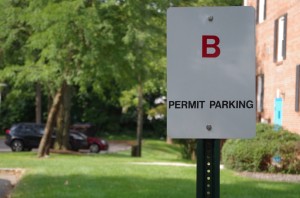
Six vehicles had their tires punctured while parked outside the Bigelow-Reed House at 23 Williams Drive this weekend, and Public Safety (PS) is working to determine if this was part of a larger attack on vehicles throughout Delaware. “We just need to determine if it’s isolated to campus – and that’s going to be our investigation if that’s the case,” said Investigator Richard Morman. “If it’s much wider, wide range like it appears it is then we’ll collaborate with the Delaware Police on their investigation. Obviously if it happened all over the city it could just be a random act; if it happened just here on campus it could be isolated.” “We’re waiting to hear back whether this is a city wide issue,” said PS Director Robert Wood. According to the incident report, the first case was discovered around 2 p.m. on August 31, at which time five other cases were found by responding PS officers. The damage is believed to have occurred between 3:30 p.m. August 30 and 1:45 p.m. August 31. Morman said that while he initially thought that the tire puncturing was targeted, the reports of similar incidents around town led him away from that. “There was no commonality between them (the vehicles),” he said, offering the example that they didn’t all have stickers which would suggest the owners were members of the same fraternity. Public Safety hasn’t determined any possible suspects yet, according to Wood. “We can share that we don’t have any,” he said. Morman added that they don’t know if the perpetrator or perpetrators were University students or Delaware residents. “Hopefully that’s to be determined,” he said.